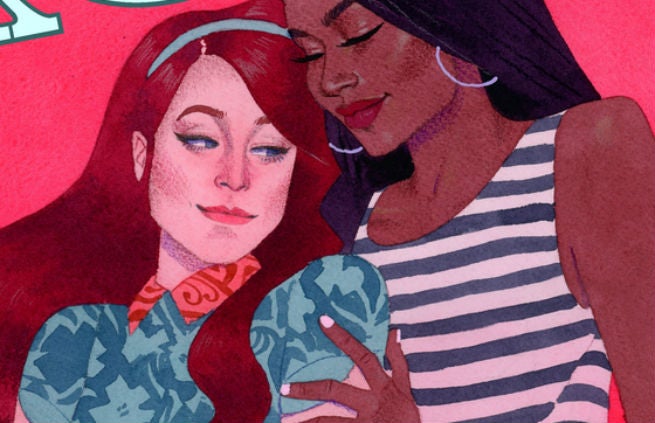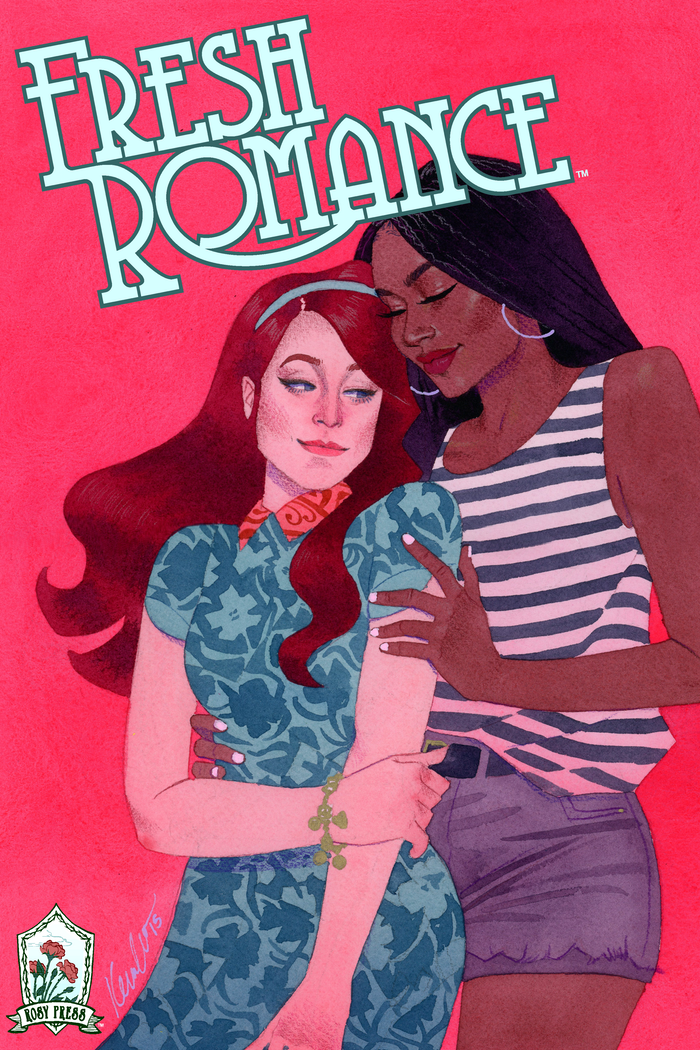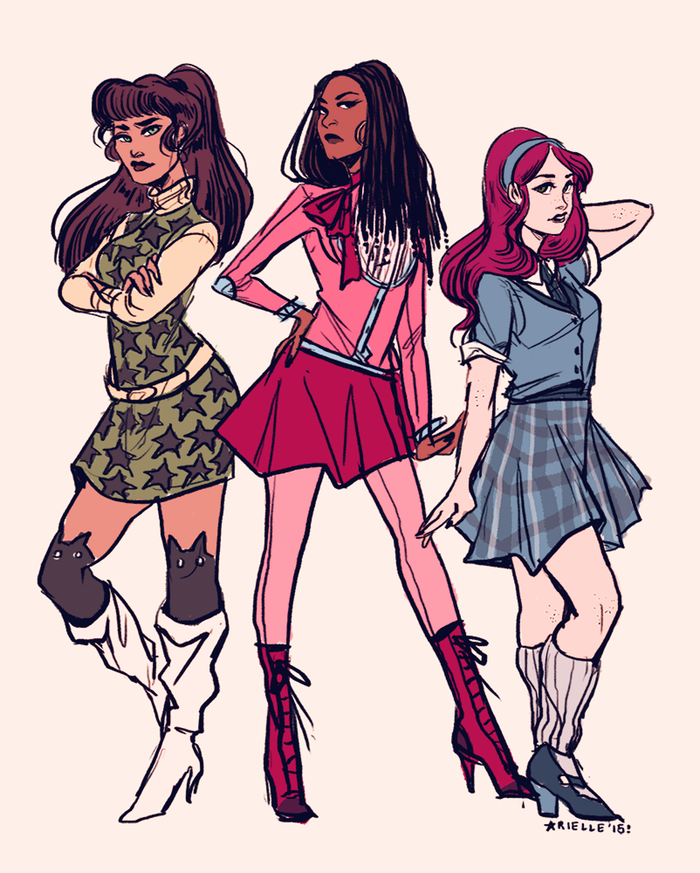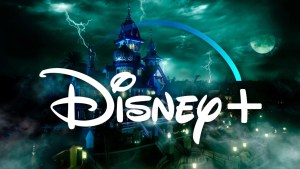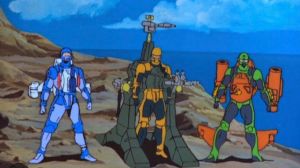Videos by ComicBook.com
They’ve still got a ways to go, though, to hit one of their most exciting stretch goals: generating enough money to hire on Secret Six and Red Sonja writer Gail Simone for a tale in an upcoming issue of the series.e
Reinventing romance comics for the 21st Century might sound nearly impossible, but Rosy Press editor and publisher Janelle Asselin has a dedicated following and a reputation from her time with Disney Books, DC Comics and (currently) ComicsAlliance. And there are a lot of people out there who are pretty certain that it’s not a matter of audiences who aren’t interested in the genre, but publishers who haven’t handled execution and marketing as well as they could.
Asselin joined ComicBook.com to talk about the project and share a few of the very first pages of interior art. You can check out the interview, a trailer for the project and a description of the story from which the pages hail below.
Here’s how Rosy Press describes the pages’ story: “A twist on the iconic high school love story by Kate Leth (KATE OR DIE), Arielle Jovellanos (FIVE), and colorist Amanda Scurti, in which a queer couple keep their relationship under wraps by pretending to compete for the same, equally secretive guy.” While the preview pags are in black and white, the published comic will be color.
Absolutely. And I don’t think it helps that the usual audience for romance is not the usual audience for comics – certainly there is crossover (I’m proof of that, for one), but particularly in the last few decades it wasn’t an easy sell.
I can’t remember who said it, but someone was once talking about comic shops and how most shop owners chose the path to the most money for the least amount of work, and that meant super hero comics for a really long time. The shops that took more care with what they included had to put in more work in terms of both searching out high-quality content and in finding the audience for that content. I think the same is true for publishers. Romance was a genre that required more work to produce and to market, and so it was often ignored.
Obviously this book came into being and — staffed with almost exclusively female creators and with yourself at the helm — immediately became part of the narrative about the “changing face of comics.” Is that something you’re aware of or is it best to just keep your head down, do your job and let people sort out how they’re going to perceive the book?
I don’t think anyone who has ever met me would associate me with just keeping my head down! Haha. But seriously, in terms of the narrative people want to associate with the Fresh Romance project, that’s up to them.
I wanted to offer the kind of comics that I wanted to read, ultimately. The face of comics IS changing, definitely, and that’s part of why Fresh Romance has gotten the support it has, but for me it’s about putting out the best comics we can, hiring the best creators we can, and bringing in as many new readers as we can and letting the rest work itself out.
I knew it would be hard to fund the whole first year via Kickstarter and really saw the Kickstarter campaign as sort of the start-up money. I did a lot of calculations based on the page rates I’m paying the creators and a few different levels of expected sales after the Kickstarter ends in order to sort out how much we need per month to get by.
The initial Kickstarter goal was aimed at getting the project rolling. Getting through the first three months would be enough for us to see how the sales were doing beyond the Kickstarter and figure out if we wanted to do another crowdfunding campaign or if sales were brisk enough to keep things going without that. There’s never been any doubt in my mind that we’d do at least a year, which is why I’ve included the one-year subscriptions. I’m funding some of the company myself, but every little bit above our goal that we raise helps get us there that much faster.
At this point, the ball seems to be rolling with a lot of momentum. Are you already at the point where getting content and talent is a lot easier than it was at first?
Definitely. Part of my advantage in starting this whole thing, of course, was that I have a fair number of contacts in comics that I could reach out to prior to launch and say “hey, would you want to do this project with me?” and not have them think I was going to scam them. But there are also a lot of people who DON’T know me and once the campaign launched, I was able to point to it and say “here’s this thing we’re doing and here’s how excited people are about it.” That ended up getting a lot more people interested, for sure.
Well, the nice thing is that my CA work is part-time currently. I knew when I took on the Senior Editor job at CA that I was launching Rosy Press in a few months, and had a lot of really clear conversations with everyone involved about it. They’ve been super supportive. But that was a big reason why I knew I couldn’t handle working full time at the site. It also saves me from one of the biggest time quandaries of being a freelancer, which is that I don’t have to spend a ton of my time pitching around places – I have my home base at CA, I have my work with Rosy Press, and when I have time I take on additional work.
Obviously you’re very close to unlocking the Gail Simone stretch goal; has it been gratifying to see so many high-profile creators expressing an interest in the project, or did you more or less assume that there would be appeal?
It’s been really gratifying – I wasn’t sure that ANYONE would be interested, although I had hopes. I knew I could count on some people to be interested in creating romance comics, but I was genuinely surprised about some of the folks who reached out about contributing.
Basically, I’ve wanted to start my own publishing company for a while now, and it was just a matter of figuring out what I wanted to publish and how I was going to make it happen. Choosing to be digital-only was a way to get the comics out there and pay people a page rate, as the economies of printing and distributing didn’t really come into it.
In terms of how I settled on romance, well, I knew I wanted to focus on a genre that had a lot of potential both in regards to what kinds of stories can be told AND in regards to bringing in new readers. It’s not just about oh, women like romance. It’s about oh, there’s a huge audience of people reading romance novels and not a ton of crossover with people who read comics – maybe we should hook those romance novel readers on comics!
And what’s kind of the mission statement here, for lack of a better term?
The official Rosy Press mission statement is “Rosy Press specializes in publishing romantic fiction and nonfiction aimed at a diverse readership. With a particular interest in comics, Rosy Press helps talented creators find an audience for their romantic stories.” Basically, we’re all about romance, supporting creators, and publishing stuff that will attract a wide variety of readers.
Do you foresee this as being a kind of open-ended anthology or do you think sooner or later you’ll start trying to plot out something like broader themes for individual issues and the like?
For now it’s pretty broad, mostly because I want the creative teams to be able to tell the kinds of stories they want to tell. Also, since many of the stories are longer than 10 pages, they’ll be continuing from issue to issue until they’re completed. That makes it harder to have individual issues have themes.
What’s the biggest thing you want our audience to know about the project, that I haven’t asked already?
Our comics are fun and can be enjoyed by a wide variety of readers, whether you’re a passionate comics fan or you’ve never picked up a comic before.

